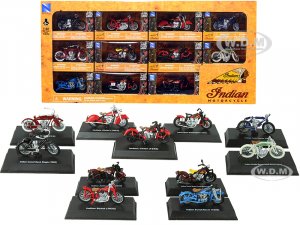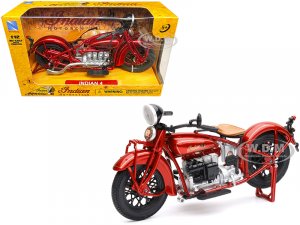Indian began making motorcycles in 1901 as the Hendee Fabricating Organization in Springfield, Massachusetts. The underlying generation model was in 1902 and 143 units were made. Through the 1910s Indian accomplished the status of the greatest maker of motorcycles around the world. The organization was re-marked the Indian Motorcycle Producing Organization in 1928.
The Scout and Boss V-twins, propelled in the initial segment of the 1920s, had turned into the Springfield organization's most prevalent plans. Made by Charles B. Franklin, the middleweight Scout and greater Boss both had a 42-degree V-twin engine outline. The two plans procured a reputation of force and steadfastness.
The underlying 1922 item Boss incorporated a 1000 cc (61ci) engine. After one year the motor was expanded to 1,200 cc (73 ci). In 1950, the V-twin motor was expanded to 1,300 cc (79 cubic inches) and adjustable forks were actualized. The motor was sustained with a 42mm Mikuni "level slide" carburetor which was introduced on the left half of the motor, a component exceptional to the early Indian motorcycles. This specific carburetion framework gave smooth quickening agent reaction through the entire RPM run. To make certain perfect oil, the engine incorporated an exclusive oil pump instrument. The Main's drive prepare had a steady work, five-speed transmission, essential chain drive and back belt drive.
With the inward burning motor being disclosed when the new century rolled over Indian originated before the famous Harley-Davidson, and was America's most punctual such mark at first created in 1901. Charge Harley and Arthur Davidson made theirs in 1903 in Milwaukee, Wisconsin.
Indian motorcycles were recognized and regarded everywhere throughout the industrialized world for its inventive plan, durability and quality alongside style and class. The cycle had the quality of "over-styling," a trademark Indian motorcycles were notorious for. The excessive bumpers created clearing shapes that emphasized the life-changing lines of the vintage bicycle.
In spite of corporate botches and unwelcome administration oversights, Indian motorcycles were in a position to persevere through the Incomparable Gloom. The business was experiencing issues in 1949, and since the English pound was debased against the American dollar, the imports were less costly than any time in recent memory. Around then another English association, Brockhouse Ltd. was financing Indian, and after a year Brockhouse acquired it in full. In any case the issues with the V-twin wound up being to a great degree hard to recoup from, and Indian was isolated in two: 50 % for assembling and the staying half for deals.



